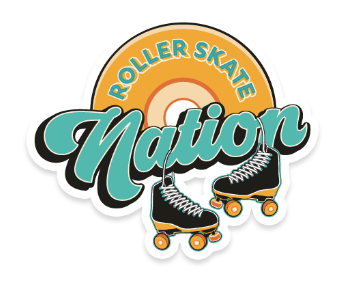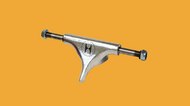Roller skate trucks are a crucial component of roller skates, as they provide the connection between the wheels and the boot, allowing for maneuverability, stability, and control. They consist of a metal axle, a pivot cup, and a kingpin, and they come in various types and sizes to suit different styles of roller skating and individual preferences.
Most roller skates, especially those designed for beginners and general recreational use, come equipped with standard trucks. Standard trucks are versatile and suitable for casual skating, making them a popular choice for most roller skates. They provide a balance of stability and maneuverability, making them suitable for a wide range of skating activities, from leisurely rides to basic tricks.
Here are the main types of roller skate trucks and their differences:
1. Standard Trucks:
These are the basic type of roller skate trucks that come equipped with most beginner and recreational roller skates. They are generally designed for straightforward skating and don't offer as much customization or fine-tuning.
2. Wide Trucks:
Wide trucks are often preferred by skaters who engage in aggressive skating, roller derby, or park skating. They offer a wider base and greater stability, making them suitable for more intense maneuvers and tricks.
3. Narrow Trucks:
Narrow trucks are commonly used in artistic roller skating and dance skating. They offer greater maneuverability and responsiveness, which are essential for precise footwork and complex movements.
4. Low Trucks:
Low trucks sit closer to the ground, which lowers the center of gravity and enhances stability. They are favored by skaters who enjoy speed skating or roller derby as they allow for greater control at higher speeds.
5. High Trucks:
High trucks offer more clearance between the ground and the boot, making them suitable for outdoor skating on uneven surfaces. They can accommodate larger wheels and are commonly used for recreational skating or long-distance skating.
6. Adjustable Trucks:
Some modern roller skate trucks are designed with adjustable pivot pins,
allowing the skater to change the truck's responsiveness by adjusting the
tightness of the kingpin or pivot cup. This feature allows for customization
based on personal preference and skating style.
Kingpin Angle
It's important to understand king pin angle, as some trucks work with only 45 degree angle kingpins and others work with only 10 degree angle king pins.
Most skate plates come with a 45 degree angle or 10 degree angle. There are a few other angles, but these are the most common. Both styles can be advantageous for a variety of skaters. More elite skaters usually know which degree they prefer for their style and will stick with that at all times. Newer skaters may find it best to use the following suggestions, or experiment with both and see which one best suits their style of skating.
10 degree plates tend to give a more stable feeling, because the kingpin and cushions are located more vertically under the skater. This is definitely the most common style. An example of a 10 degree angle plate is the Powerdyne Reactor Pro plate, pictured below.

45 degree plates have become very popular particularly with roller derby skaters. The cushions are positioned almost horizontally, this makes the skate more responsive to direction changes. Make quick changes in direction easier and quicker. This is commonly referred to in roller derby as cutting, used to quickly get across the width of the derby track to stop an opponent. On a 45 degree angle plate, the kingpins point to the side more than a typical plate. An example of a 45 degree angle plate is the Sure-Grip Avenger with DA45 Trucks, pictured below.



